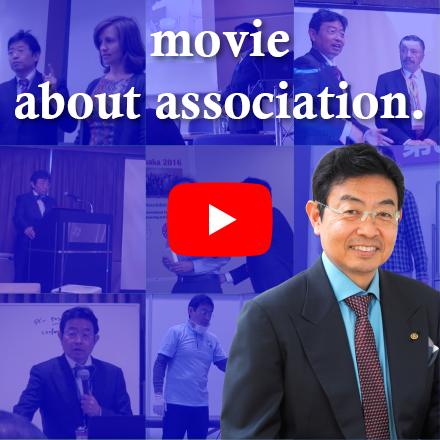Treatments beyond usual dentistry
One would assume a dentist's main job is treat cavities and other conditions related to oral care. Of course, Shin Kobe Dental Office chief dentist Yoshiro Fujii does just that, but his other main job is to treat patients who have poor body balance and, sometimes, headaches and dizziness.
Fujii is an expert on occlusion, or appropriate biting point related to the fitting of the upper and lower teeth when the jaws are closed. Unbalanced occlusion, caused by irregular concavity and convexity of teeth and other such conditions, is considered one of the causes of bad posture and balance as well as stiffness in the shoulders and other muscles.
Like many other dentists, Fujii graduated from a dental university and worked for various dental clinics. He opened Shin Kobe Dental Office in Kobe in October 2000.
As at other dental clinics, his office treats cavities and other conditions that dentists normally deal with, but his specialty has mostly been occlusion. He has been across Japan and overseas to give speeches on occlusion to young dentists and people in related fields.
Fujii also writes books on occlusion, among awareness on the condition.
Especially, orthopedists and chiropractors should know about occlusion, Fujii said, because patients with symptoms stemming from bad occlusion tend to go to such practitioners first.
"When they cannot fix these symptoms, not many of them can think of bad occlusion as the cause of the symptoms," he said.
But in time, he found more and more cases in which the treatment of occlusion could not entirely fix various symptoms.
He identified the cause as electromagnetic waves, realizing that some fillings in teeth function as an antenna that collects the waves. People's exposure to electromagnetic waves has increased dramatically in recent years, especially as the use of mobile phones has spread rapidly.
Excessive and prolonged exposure to electromagnetic waves has been known to cause damage to the nervous system, causing various symptoms including poor bodily balance and dizziness.
Negative health effects of electromagnetic waves from mobile phones have been highlighted by a number of health authorities worldwide. The World Health Organization says on its website that the electromagnetic fields generated by mobile phones are classified by the International Agency for Research on Cancer as possibly carcinogenic to humans.
But limiting the use of mobile phones is difficult because the devices play and important part in contemporary human life as a vital communication tool.
The problem of using unhealthy materials for filling teeth is also hard to solve because the Ministry of Health, Labor and Welfare and the dental Industry do not want to change regulations on fillings, Fujii said.
"The dental industry does not want to admit fillings function as an antenna to collect electromagnetic waves because dentists do not want to admit they use something bad for a person's health," Fujii said, adding that there are some individual dentists who do admit it.
"The health ministry also does not want to admit it because there is no 'electromagnetic disease'."
One of the exams Fujii conducts to check patients' sensitivity to electromagnetic waves is to hold a mobile phone and move it close to a standing patient. One out of five such patients who come to his clinic show signs of losing balance, such as tilting their body to the side, Fujii said.
For those patients, Fujii recommends changing fillings to those with the type of materials that do not collect electromagnetic waves. Gold is one such material but fillings using gold and other similar materials are not normally covered by health insurance.
By using such expensive materials, Fujii said, he has seen many happy patients who have improved their quality of life.
For example, video footage provided by Fujii shows an elderly female patient who could not walk straight before changing the fillings and was able to walk straight after. Fujii has published five books so far. One of them, published in April 2010, is titled "Are mobile phones bad for health? Countermeasures from dentists against electromagnetic waves."
An example of one of the worst materials used in fillings is amalgam, a substance formed by the reaction of mercury with other metals. Amalgam collects electromagnetic waves and is classified as toxic but still used for fillings because it is soft and becomes hard in time and thus is easy to process.
Some kinds of fillings covered by health insurance have a lower propensity to collect electromagnetic waves than others. It is thus possible to change fillings to improve patients' conditions at reasonable prices, but it takes know-how to do so, Fujii said. One of the reasons he goes out to make speeches is to inform young dentists of the know-how.
He makes speeches on oral care, including some warning of the dangers of electromagnetic waves, about 50 times a year and will continue to do so.
"There is no solution but to keep raising awareness."



